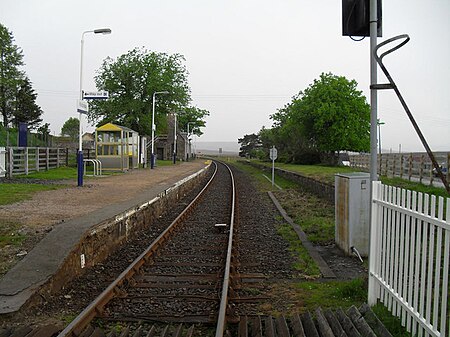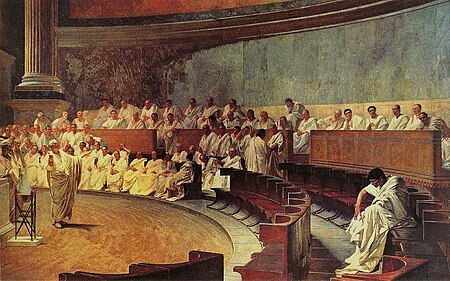Qiyan
|
Read other articles:

Giacomo Devoto Giacomo Devoto (Genova, 19 luglio 1897 – Firenze, 25 dicembre 1974) è stato un glottologo e linguista italiano, tra i massimi esponenti della disciplina nel Novecento. Indice 1 Biografia 2 Gli studi 3 Opere 4 Note 5 Bibliografia 6 Voci correlate 7 Altri progetti 8 Collegamenti esterni Biografia Era figlio del clinico e patologo Luigi Devoto (1864-1936) e fratello dell'industriale Giovanni (1903-1944). Nel 1939 fondò con Bruno Migliorini la rivista Lingua nostra[1]. Gia…

Voce principale: Pisa Calcio. Pisa Sporting ClubStagione 1980-1981 Sport calcio Squadra Pisa Allenatore Lauro Toneatto Amministratore unico Adolfo Anconetani Serie B7º Coppa ItaliaPrimo turno Maggiori presenzeCampionato: Occhipinti (38) Miglior marcatoreCampionato: Cantarutti (12) StadioArena Garibaldi 1979-1980 1981-1982 Si invita a seguire il modello di voce Questa pagina raccoglie i dati riguardanti il Pisa Sporting Club nelle competizioni ufficiali della stagione 1980-1981. Indice 1 St…

Annual film festival in Avezzano, Italy Festival Cinema e Ambiente AvezzanoLocationAvezzano, ItalyWebsitehttps://cinemaeambienteavezzano.it/ The Festival Cinema e Ambiente Avezzano is an annual film festival held in Avezzano, in the Abruzzo region, Italy. The festival boasts the recognition of the Ministry of Culture.[1] The festival The festival Cinema e Ambiente follows the story of Avezzano film festivals and since 2016 it has become an international kermesse dedicated to environmenta…

American professional esports team Atlanta ReignFoundedAugust 2, 2018DisbandedNovember 10, 2023LeagueOverwatch LeagueRegionWestTeam historyAtlanta Reign2018–2023Location1290 Collier Rd.Atlanta, Georgia, U.S.[1]Colors OwnerAtlanta Esports VenturesGeneral managerPaul HamiltonAffiliation(s)ATL AcademyMain sponsorCox CommunicationsWebsiteOfficial websiteUniforms The Atlanta Reign were an American professional Overwatch esports team based in Atlanta, Georgia. The team com…

Державний комітет телебачення і радіомовлення України (Держкомтелерадіо) Приміщення комітетуЗагальна інформаціяКраїна УкраїнаДата створення 2003Керівне відомство Кабінет Міністрів УкраїниРічний бюджет 1 964 898 500 ₴[1]Голова Олег НаливайкоПідвідомчі орг�…

Questa voce o sezione sull'argomento scultori italiani non cita le fonti necessarie o quelle presenti sono insufficienti. Puoi migliorare questa voce aggiungendo citazioni da fonti attendibili secondo le linee guida sull'uso delle fonti. Segui i suggerimenti del progetto di riferimento. Pinuccio Sciola Giuseppe Sciola, conosciuto come Pinuccio (San Sperate, 15 marzo 1942 – Cagliari, 13 maggio 2016[1]), è stato uno scultore italiano. Era conosciuto per la sua attività nella promo…

Railway station in Highland, Scotland KinbraceScottish Gaelic: Ceann a' Bhràiste[1]General informationLocationKinbrace, HighlandScotlandCoordinates58°15′31″N 3°56′28″W / 58.2585°N 3.9412°W / 58.2585; -3.9412Grid referenceNC862316Managed byScotRailPlatforms1Other informationStation codeKBC[2]HistoryOpened28 July 1874Original companySutherland and Caithness RailwayPre-groupingHighland RailwayPost-groupingLondon, Midland and Scottish RailwayKey d…

IX legislaturaApertura del parlamento nel 1865Stato Italia MonarcaVittorio Emanuele II di Savoia Inizio18 novembre 1865 Fine13 febbraio 1867 SessioniI sessione18 nov. 1865–30 ott. 1866 II sessione15 dic. 1866–13 feb. 1867 CameraElezioni22 ottobre 1865 (Dettagli) PresidenteAdriano Mari DeputatiElenco SenatoPresidenteGabrio Casati SenatoriElenco Capi di governoGoverniLa Marmora I (1864-1865)La Marmora II (1865-1866)Ricasoli II (1866-1867) VIII legislatura X legislatura Modifica dati su Wi…

This article includes a list of references, related reading, or external links, but its sources remain unclear because it lacks inline citations. Please help improve this article by introducing more precise citations. (January 2017) (Learn how and when to remove this message) Drexel ManorDrexel Manor stationGeneral informationLocationBurmont and Cheswold RoadsDrexel Hill, Pennsylvania.Coordinates39°56′32″N 75°17′47″W / 39.9422°N 75.2965°W / 39.9422; -75.2965Ow…

Commuter rail service in Northern Virginia Manassas LineVRE train in Manassas station.OverviewStatusOperatingOwnerNorfolk Southern Railway, CSX TransportationLocaleWashington, D.C., Fairfax County, Virginia, Prince William County, VirginiaTerminiWashington Union StationBristow, VAStations10ServiceTypeCommuter railSystemVirginia Railway ExpressTrain number(s)321–338Operator(s)Virginia Railway ExpressHistoryOpenedJune 22, 1992TechnicalLine length35 miles (56 km)Charactergrade-separated, Und…

1943 book by C. S. Lewis Abolition of Man First editionAuthorC. S. LewisCountryUnited KingdomLanguageEnglishSubjectValue and natural lawPublisherOxford University PressPublication date1943Media typeHardcover and paperbackPreceded byA Preface to Paradise Lost Followed byBeyond Personality The Abolition of Man is a 1943 book by C. S. Lewis. Subtitled Reflections on education with special reference to the teaching of English in the upper forms of schools, it uses that as a…

Second-largest branch of Islam Shia and Shias redirect here. For other uses, see Shia (disambiguation). Part of a series onShia Islam Beliefs and practices Monotheism Holy Books Prophethood Succession to Muhammad Imamate Ismaili Twelver Zaydi Angels Judgment Day Mourning of Muharram Intercession Clergy The Four Companions Arbaʽeen Pilgrimage Days of remembrance Ashura Arba'een Mawlid Eid al-Fitr Eid al-Adha Eid al-Ghadir Mourning of Muharram Omar Koshan History Verse of purification Two things …

English figure of speech Part of a series onRhetoric History Ancient Greece Asianism Atticism Attic orators Calliope Sophists Ancient India Ancient Rome The age of Cicero Second Sophistic Middle Ages Byzantine rhetoric Trivium Renaissance Studia humanitatis Modern period Concepts Captatio benevolentiae Chironomia Decorum Delectare Docere Device Eloquence Eloquentia perfecta Eunoia Enthymeme Facilitas Fallacy Informal Figure of speech Scheme Trope Five canons Inventio Dispositio Elocutio Memoria …

Quantum measurement phenomenon With the increasing number of measurements the wave function tends to stay in its initial form. In the animation, a free time evolution of a wave function, depicted on the left, is in the central part interrupted by occasional position measurements that localize the wave function in one of nine sectors. On the right, a series of very frequent measurements leads to the quantum Zeno effect. The quantum Zeno effect (also known as the Turing paradox) is a feature of qu…

Current delegationBob Casey Jr. (D)John Fetterman (D) Pennsylvania ratified the United States Constitution on December 12, 1787, and elects its U.S. senators to class 1 and class 3. Officeholders are popularly elected, for a six-year term, beginning January 3. Elections are held the first Tuesday after November 1. Before 1914, they were chosen by the Pennsylvania General Assembly; before 1935, their terms began March 4. The state's current U.S. senators are Democrats Bob Casey Jr. (since 2007) a…

লক্ষ্মীবাই ঝান্সীৰ ৰাণী ঝান্সীৰ যোদ্ধা ৰাণী - ৰাণী লক্ষ্মীবাইৰ প্ৰতিচ্ছবি ঝান্সীৰ ৰাণী ৰাজত্ব ১৮৫৩-১৮৫৭ পূৰ্বসূৰী গংগাধৰ ৰাও উত্তৰসূৰী ব্ৰিটিছ ৰাজ দাম্পত্য সঙ্গী মহাৰাজ গংগাধৰ ৰাও নেৱা�…

Logo The Swiss Space Office (SSO) is the federal government's competence centre for national and international space matters. In its role it cooperates closely with other federal offices and is responsible for the preparation and implementation of the policy and strategic orientations of the space domain in Switzerland.[1] The SSO is part of the State Secretariat for Education, Research, and Innovation. The Head of the SSO is Dr. Renato Krpoun.[2] The SSO ensures international co…

Syahril SabirinSyahril pada 1998 Gubernur Bank Indonesia ke-11Masa jabatanFebruari 1998 – Mei 2003PresidenSoehartoB. J. HabibieAbdurrahman WahidMegawati SoekarnoputriPendahuluSudrajad DjiwandonoPenggantiBurhanuddin Abdullah Informasi pribadiLahir14 Oktober 1943 (umur 80)Bukittinggi, Sumatera Barat, Masa Pendudukan JepangKebangsaanIndonesiaSuami/istriMurni Syahril SabirinAnakMelissa Sari SabirinStevano SabirinAlma materUniversitas Gajah MadaKolese WilliamsUniversitas Vanderbil…

بانكوك في خطرBangkok Dangerous (بالإنجليزية) معلومات عامةالصنف الفني حركة، جريمة، إثارةتاريخ الصدور 2008مدة العرض 100 دقيقةاللغة الأصلية الإنجليزيةالعرض أبيض وأسود مأخوذ عن Bangkok Dangerous (en) البلد الولايات المتحدةمواقع التصوير جمهورية التشيك — تايلاند موقع الويب bangkokdangerousmovie.net الطاقمال�…

Indigenous Yakthung group of Nepal , Sikkim This article contains phonetic transcriptions in the International Phonetic Alphabet (IPA). For an introductory guide on IPA symbols, see Help:IPA. For the distinction between [ ], / / and ⟨ ⟩, see IPA § Brackets and transcription delimiters. Ethnic group Limbu , Yakthung , Subbaᤕᤠᤰᤌᤢᤱलिम्बुA Limbu man from the 19th century Nepal 414,704[1] India 100,550 …

